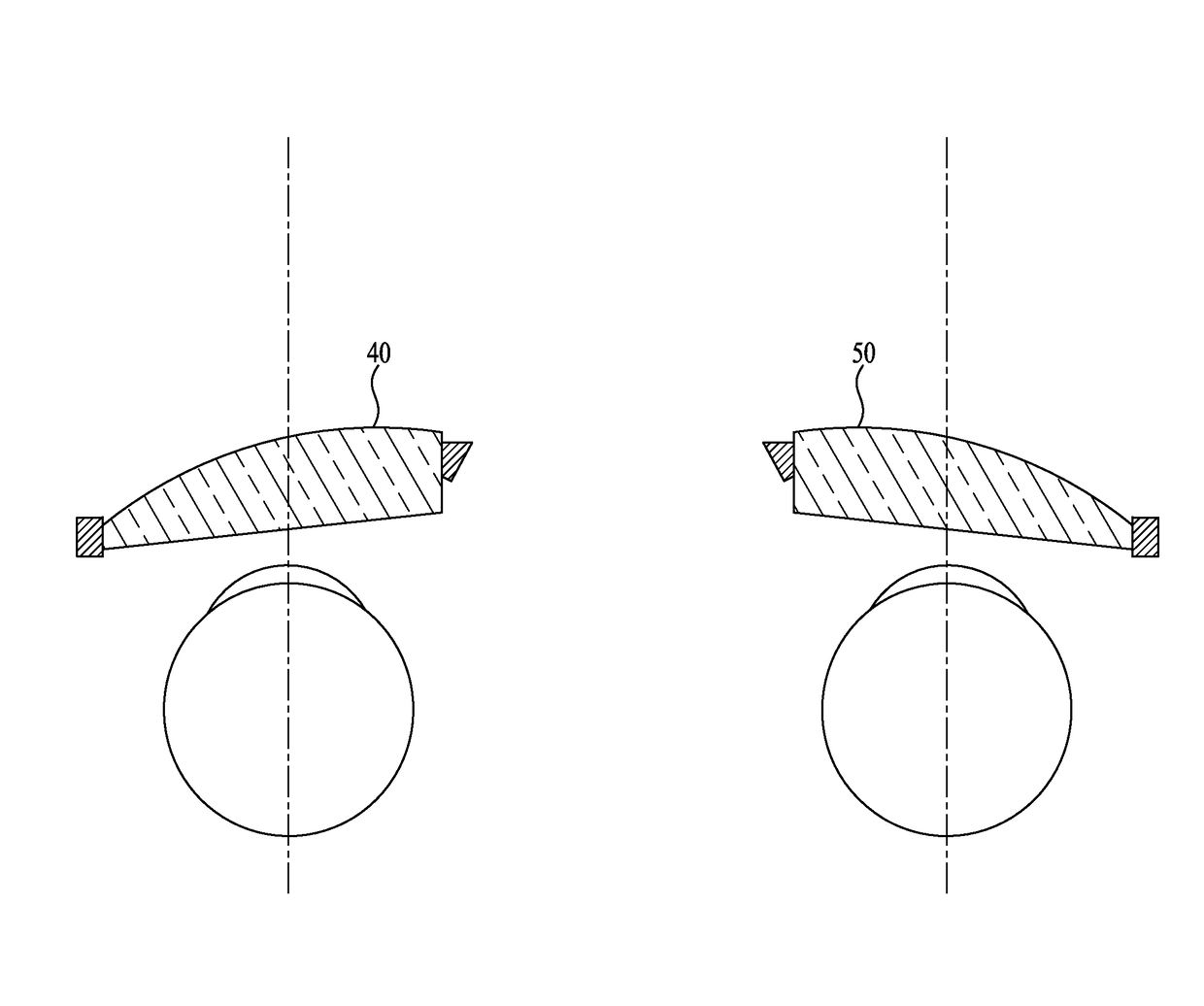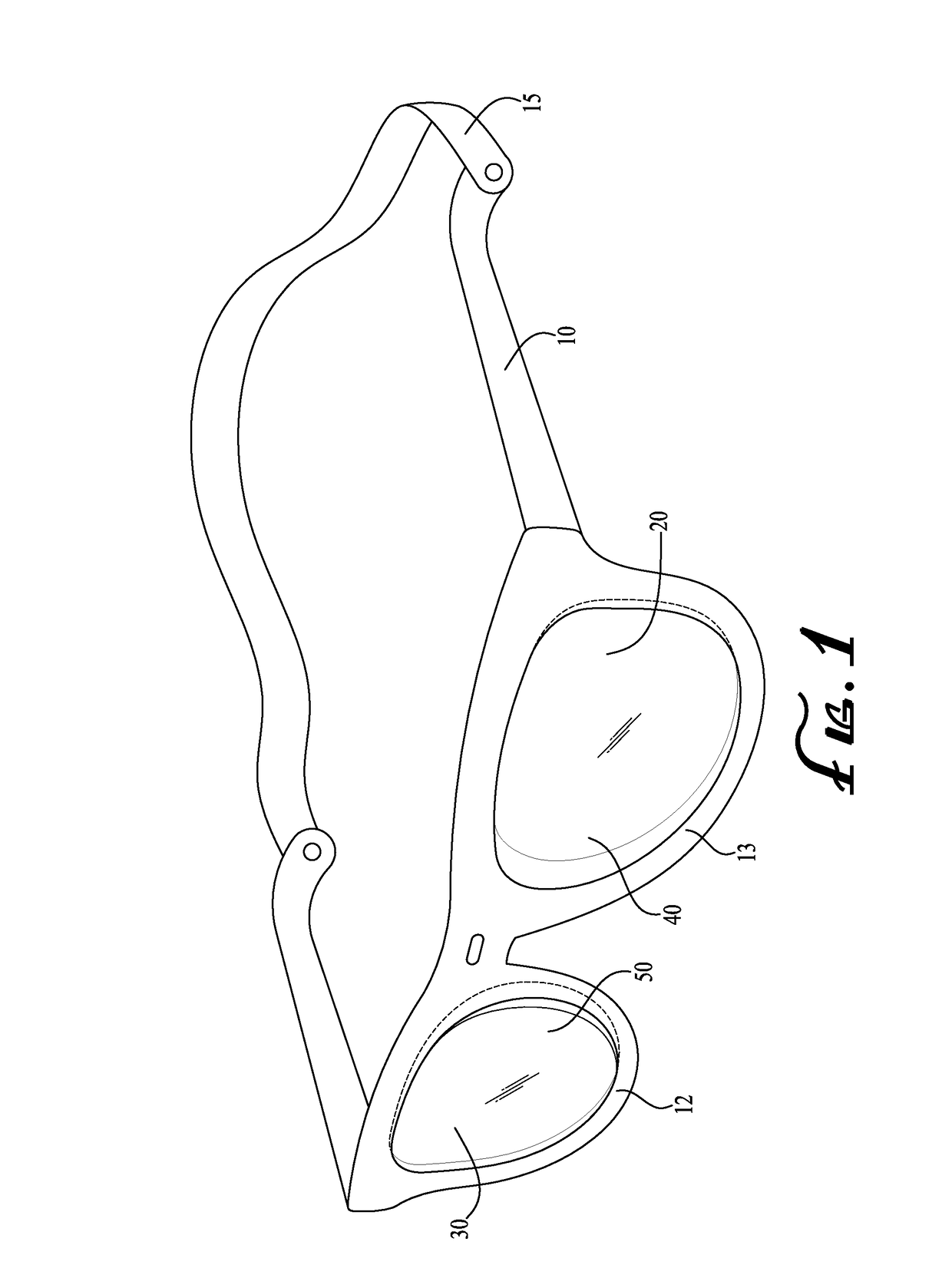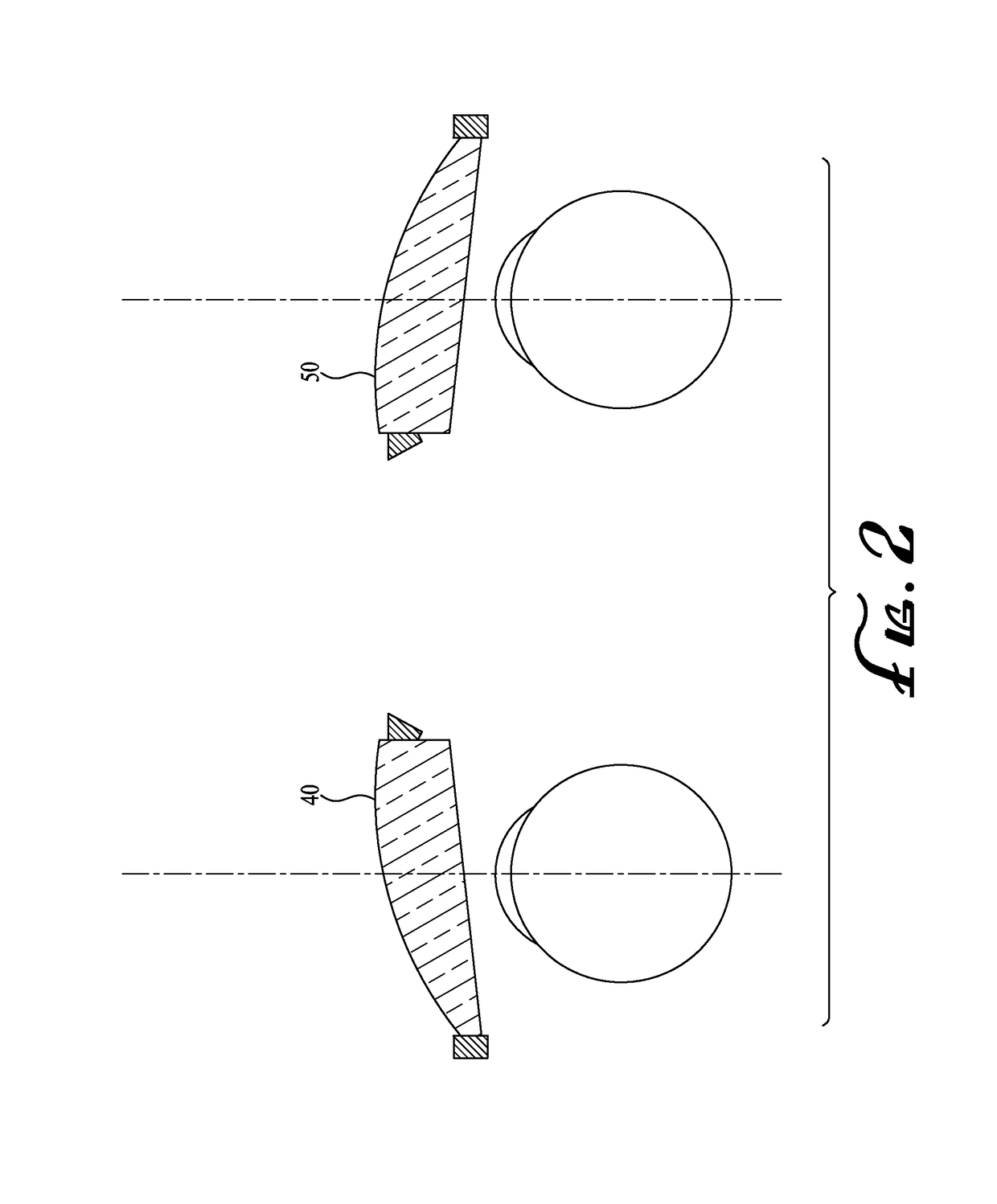Method and device for treating averted gaze
a technology of averted gaze and a treatment method, which is applied in the field of averted gaze treatment methods and devices, can solve the problems of autism averted gaze interference with every available available, no single best treatment method for all children, and no simple diagnostic method
- Summary
- Abstract
- Description
- Claims
- Application Information
AI Technical Summary
Benefits of technology
Problems solved by technology
Method used
Image
Examples
example 1
[0043]A kit is provided to parents containing three pairs of glasses. Each pair of glasses has a matching prism in both lenses. The power of the prisms in the first pair of glasses are 3.0 Base In, and the other two pairs of glasses have prisms of 6.0 and 9.0 Base In, respectively. The frames of the glasses are color-coded so that the parents may easily determine which glasses correspond to which prism power. Based upon initial conversations with a professional, it is determined the parents should start the testing process by using the pair of glasses having prisms of 3.0 diopters. After fitting the child with the first pair of glasses, the child's initial reactions are recorded and his activities observed for a day or two to check for any improvement in cognitive ability. The parents then switch the child to the glasses having prisms of 6.0 diopters. The child's behavior with the different power prisms is observed to determine if the stronger prisms are better or worse for the chil...
PUM
 Login to View More
Login to View More Abstract
Description
Claims
Application Information
 Login to View More
Login to View More - R&D
- Intellectual Property
- Life Sciences
- Materials
- Tech Scout
- Unparalleled Data Quality
- Higher Quality Content
- 60% Fewer Hallucinations
Browse by: Latest US Patents, China's latest patents, Technical Efficacy Thesaurus, Application Domain, Technology Topic, Popular Technical Reports.
© 2025 PatSnap. All rights reserved.Legal|Privacy policy|Modern Slavery Act Transparency Statement|Sitemap|About US| Contact US: help@patsnap.com



